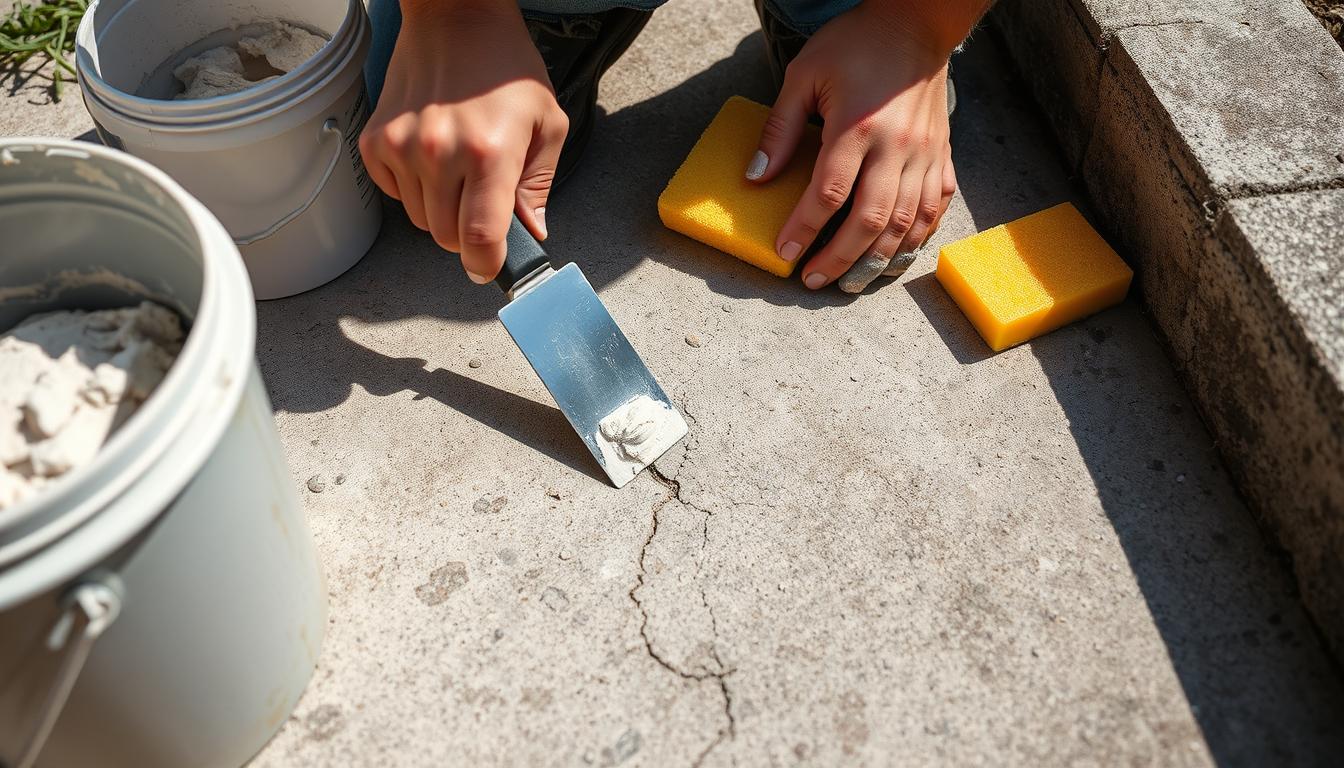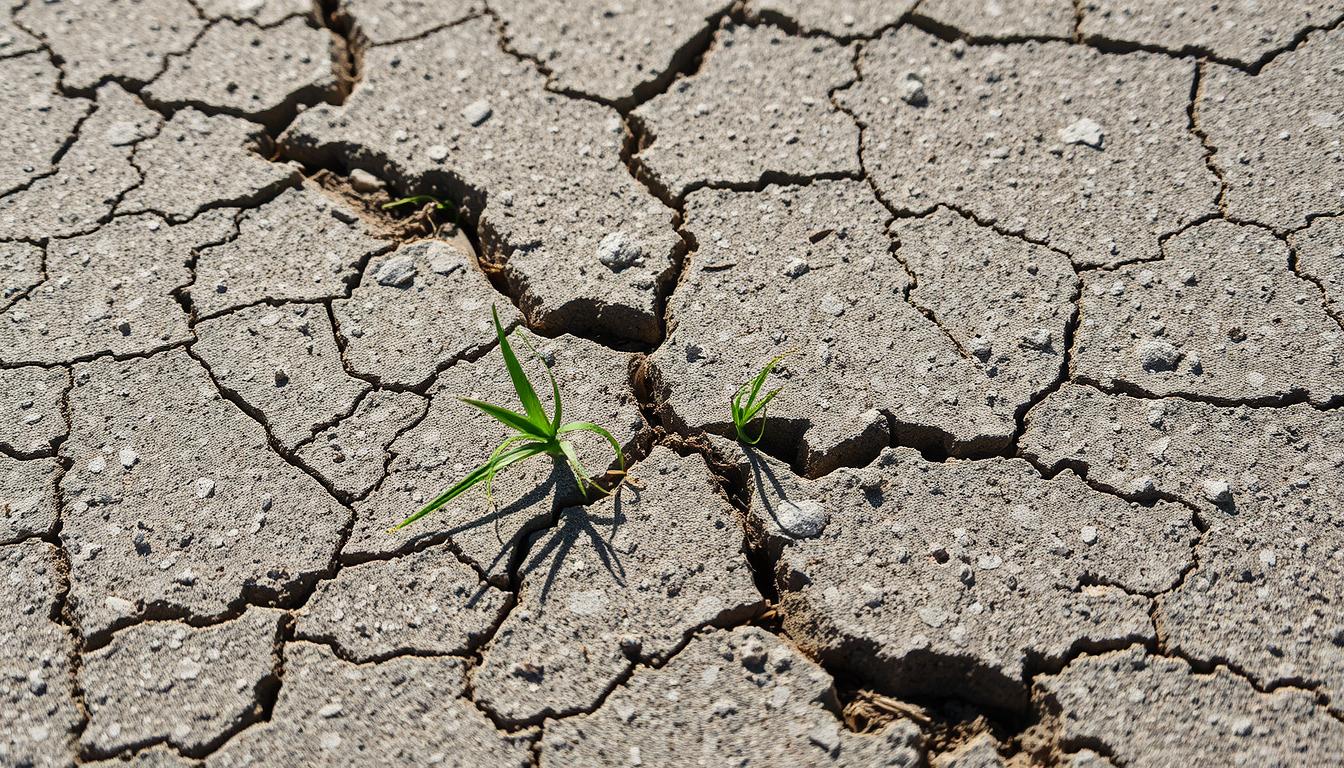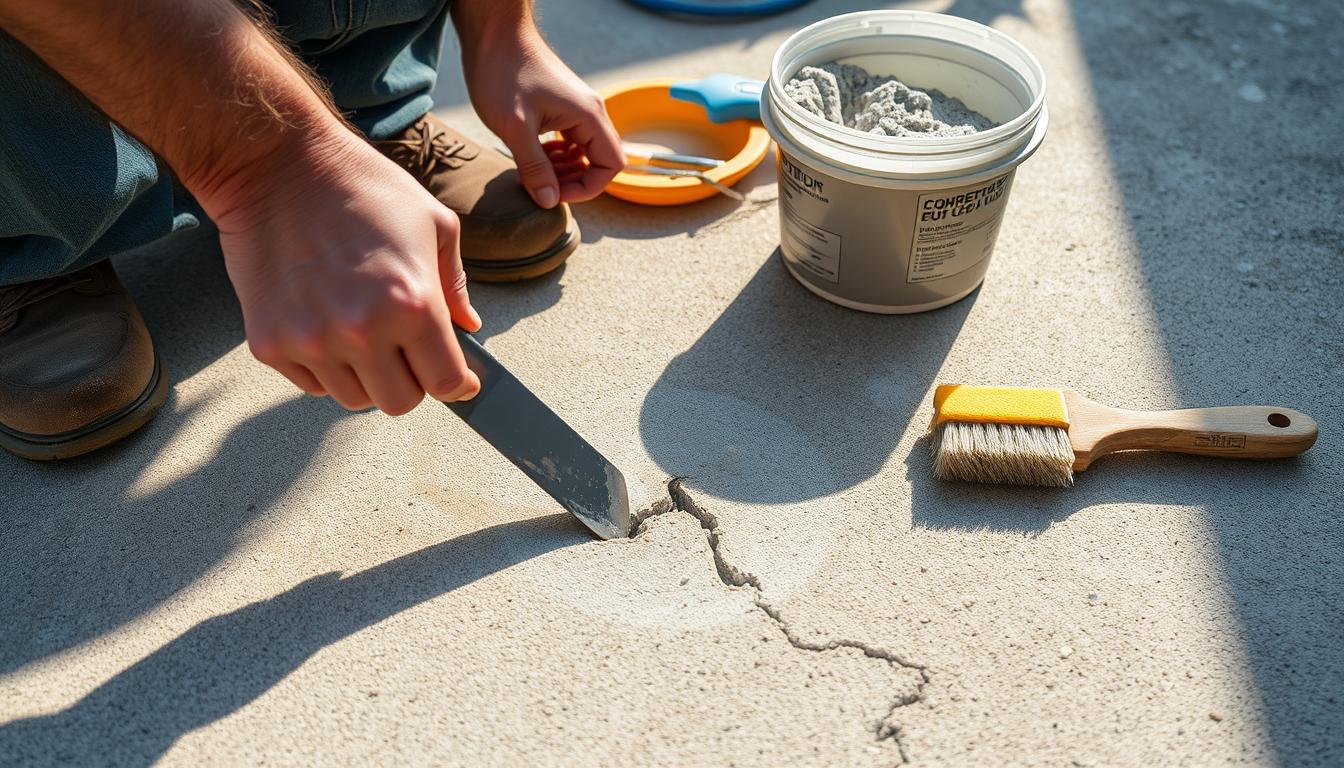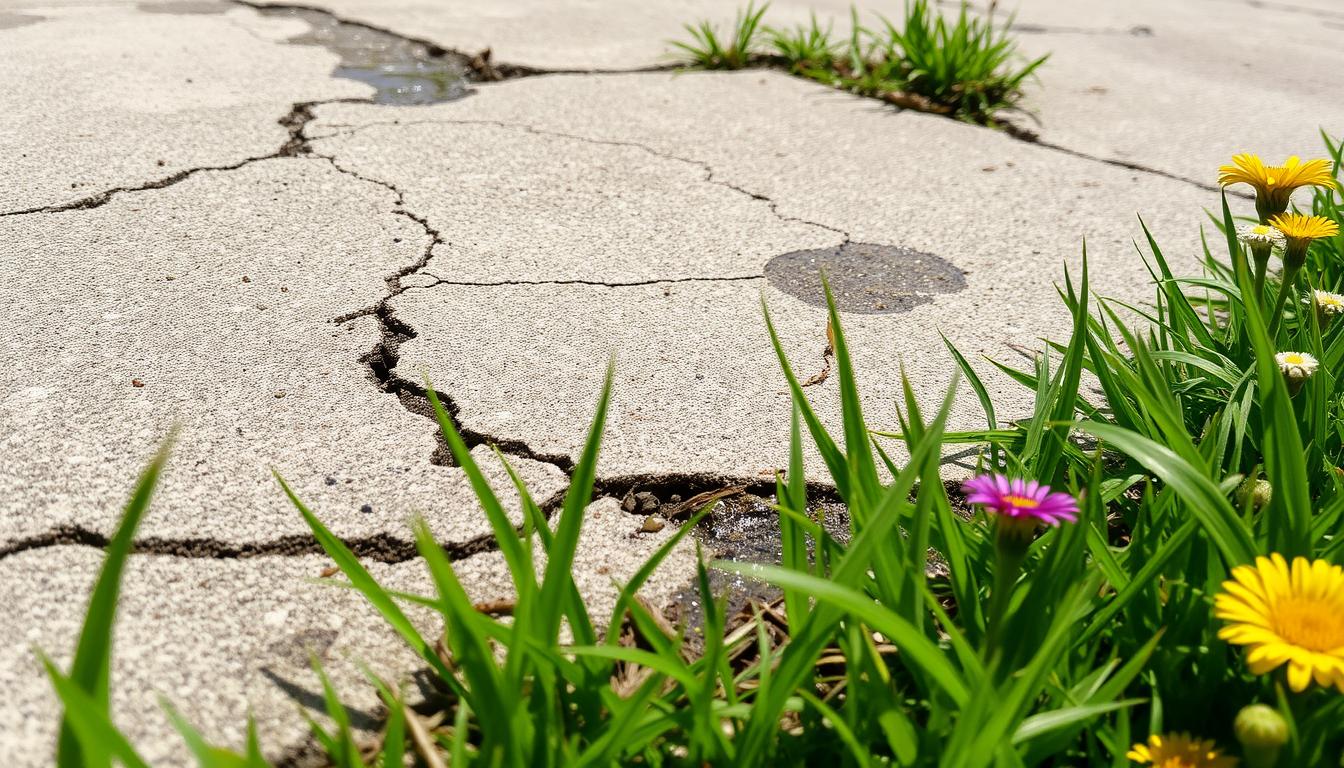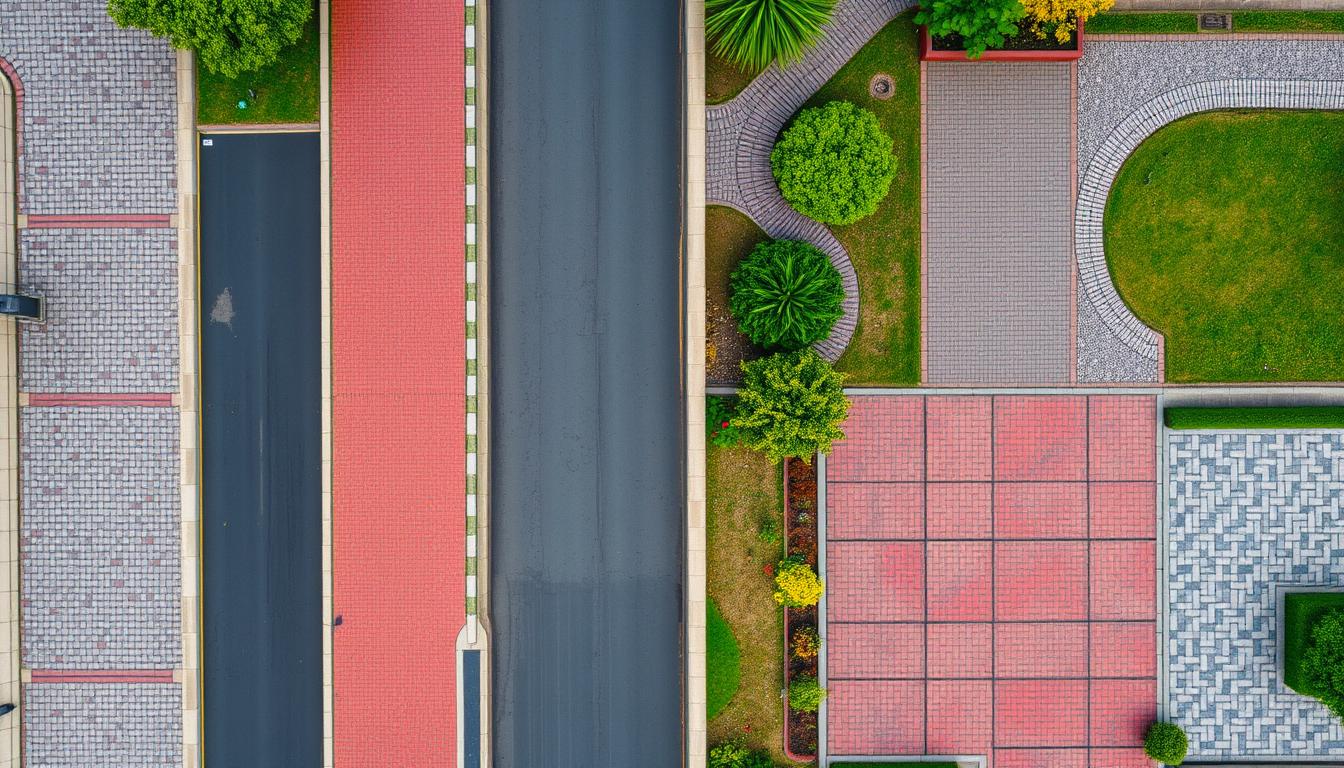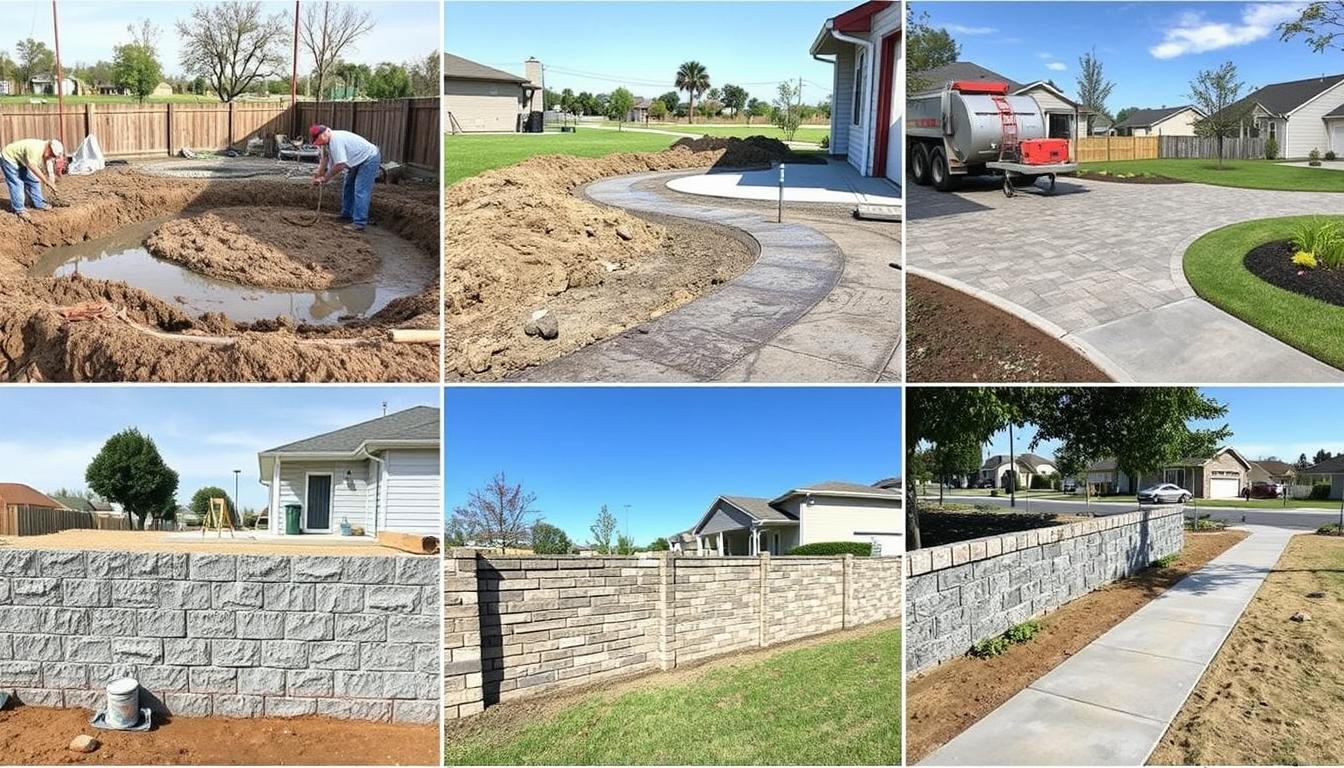Ever seen small cracks in your concrete and thought, “Can I Repair Small Cracks in Concrete Myself?” Yes, many small issues can be fixed with DIY methods. Knowing the types of cracks and how to repair them helps keep your concrete looking good and lasting longer.
Cracks less than ¼ inch wide can often be fixed with concrete caulk. Hairline cracks, which don’t let water in, usually don’t need fixing right away. But wider cracks might need more materials before you can use a concrete crack filler.
Thinking about fixing concrete yourself? Remember, a good concrete caulk costs between $10 and $12. But epoxy and polyurea crack fillers can cost more than double that. Doing it yourself can save money, but it takes time. Professionals might finish the job in hours, but fixing small cracks yourself can be rewarding.
Want to learn more about fixing cracks? Check out this resource for tips on asphalt crack filling and maintenance.
Key Takeaways
- Small cracks (less than ¼ inch) can often be repaired using concrete caulk.
- Hairline cracks usually do not require immediate repair unless worsening.
- Wider cracks may need a foam backer rod or additional materials for effective repair.
- DIY repairs can save money but may take considerably longer than professional services.
- Regular sealing of concrete surfaces is recommended every 2-3 years for added protection.
Understanding Small Concrete Cracks
Small concrete cracks can happen for many reasons. It’s important to know why they occur to choose the right fix. Some cracks are just on the surface, while others need quick action. Knowing the difference helps homeowners fix cracks well and choose the right repair method.
Types of Small Cracks
Concrete can crack in different ways. Hairline cracks, less than 1/16 inch wide, often happen as the concrete settles. Surface cracks may show up early in the curing process. But cracks wider than 1/8 inch need sealing and checking further.
If cracks are more than ½ inch, it’s time to call a pro. These bigger cracks point to deeper problems.
Causes of Concrete Cracking
Many things can cause concrete to crack. Poor curing can weaken the concrete. Temperature changes can also cause it to expand and contract. Moisture issues, like water getting in, can make cracks worse over time.
Fixing these problems early can stop more damage. It also helps keep the concrete surface strong for longer.
Tools and Materials Needed for Repairs
Fixing small concrete cracks requires the right tools and materials. Knowing what tools you need is essential for DIY repairs. Choosing the right concrete repair products is also key for lasting results and looks.
Essential Tools for DIY Repairs
First, gather a few important tools. A pressure washer is good for cleaning the concrete before you start. It doesn’t have to be very powerful.
A masonry chisel helps remove loose concrete around the crack. This ensures the repair sticks well. A caulking gun is needed for some sealants, and a small putty knife helps with the concrete patching compound. For big cracks, use backer rods to make the repair better.
Best Products for Concrete Repair
Choosing the right concrete patching compound is critical. Self-leveling concrete sealants work well for horizontal joints. Pre-mixed concrete patch compounds are great for gaps because they stretch well.
For big cracks, use a backer rod, sizes 1/4 to 1/2 inches. Make sure the concrete repair products fit the crack type and size you’re fixing.
Step-by-Step Guide to Repairing Small Cracks
Fixing small cracks in concrete can make your driveway last longer and look better. Many homeowners can do this job themselves with the right steps. Here’s how to fix concrete cracks effectively.
Preparing the Area for Repair
Clean the area around the crack well. A pressure washer can remove most dirt and debris, helping the filler stick better. If the crack is wider than ½ inch, use a backer rod to support the filler. Make sure the surface is dry before starting the repair.
Applying the Repair Material
Choosing the right concrete crack filler is key. For small cracks, a liquid filler might work. For bigger cracks, use a patching compound. Make sure the filler is level with the surface to avoid wear and tear.
Studies show that about 20% of DIY caulk jobs have imperfections. Try to get a smooth finish to match the surrounding concrete.
Finishing Touches
Let the filler dry completely after applying. Most caulk dries in 24 to 72 hours, depending on the weather. To protect the repair, apply a concrete sealer later. Keeping the area well-maintained can extend its life by up to 30%.
Safety Measures During the Repair Process
Keeping safe during your DIY concrete repair is key. The job can have risks, so using the right gear and following safe steps is vital. These steps not only keep you safe but also help your repair job succeed.
Personal Protective Equipment (PPE)
Wearing the right gear is critical when fixing cracked concrete. You’ll need gloves to protect your hands, goggles for your eyes, and knee pads for your knees. Also, wear sturdy shoes to avoid injuries from falling tools.
Choosing the right PPE makes your work safer and more comfortable.
Safe Work Practices
Safe work habits are just as important as the right gear. Make sure your workspace is clear and well-ventilated, which is important when using strong adhesives. Always read the labels and instructions of your materials to avoid risks.
Having a first aid kit nearby can help with any injuries. By following these safe practices, you reduce the risk of accidents and work more efficiently.
When to DIY and When to Call a Professional
Deciding whether to fix concrete cracks yourself or call a pro is key. Knowing when to seek help ensures problems are solved right. While small cracks can be fixed at home, some signs mean you need a pro.
Signs a Repair Might Be Beyond Your Skills
Cracks over 1/4 inch wide usually need a pro to check for deeper issues. Visible loose gravel or a lot of moisture around cracks point to waterproofing problems. Diagonal or stair-step cracks near doors and windows could mean foundation issues, needing a pro’s look.
Benefits of Hiring Professionals
Choosing pros for concrete crack repair speeds up the process and ensures it’s done right. They can spot issues you might overlook. With their tools and techniques, like epoxy or foam, repairs last longer.
Homeowners get a quality guarantee with professional work. This means you won’t have to fix the same problem over and over. It also saves you money in the long run.
Advantages of Repairing Concrete Cracks Promptly
Fixing small concrete cracks early has many benefits. It’s not just about looks. It helps prevent more damage and keeps your property’s value up. This way, you can avoid expensive fixes later on.
Preventing Further Damage
Small cracks can turn into big problems if ignored. They can let water in and make structures unstable. Waiting too long can cost a lot more to fix later.
Fixing cracks instead of replacing concrete can save you up to 50% of the cost. It also helps your concrete last longer against harsh weather. Fixing cracks early can add 10 to 15 years to your concrete’s life.
Enhancing Property Value
Fixing cracks quickly makes your property more attractive. It keeps your curb appeal up and prevents bigger, more costly repairs. Well-kept concrete surfaces make your property more appealing to buyers.
Regular maintenance and quick repairs can save you about 20% on future fixes. By sealing cracks, you show you care about your property. This can increase its value. Repairing cracks offers long-term benefits for homeowners.
HT Paving and Seal Coating Services Overview
HT Paving and Seal Coating Services is all about top-quality concrete repair in the Bay Area. We focus on quality and safety in every project. This ensures your concrete surfaces last long and look great.
Our Commitment to Quality and Safety
Quality and safety are our top priorities. We use the latest methods and materials for all repairs. Our team is ready to tackle any challenge, giving you peace of mind.
We follow strict safety rules on every job site. This makes sure we meet all industry standards.
Overview of Our Services in the Bay Area
In the Bay Area, we provide a wide range of services. This includes asphalt paving, seal coating, and concrete repair. Our team works on both homes and businesses, meeting all your maintenance needs.
Need fixes for small cracks or a full resurfacing? HT Paving and Seal Coating Services has you covered.
Customer Testimonials
At HT Paving and Seal Coating, we put our clients first. We’ve gathered many testimonials that show our HT Paving services are top-notch. Our dedication to quality has made many happy customers who love to share their stories.
Real Experiences from Our Clients
Our clients love how we fix concrete problems. One happy customer said our work made their property look better. They noticed a big difference after we sealed the cracks.
Others have praised our work in preventing damage from bad weather. They say our caulking saved their property from harm.
Our Guarantee of Satisfaction
We guarantee you’ll be happy with our work. Our team, with 30 years of experience, works hard to make sure you’re satisfied. The positive feedback we get shows we’re doing something right.
It also shows our repairs last long and make places safer. Fewer trip hazards mean everyone can move around without worry.
Get in Touch with HT Paving Today
If you’re dealing with concrete issues, it’s time to call HT Paving. Our team is all about fixing concrete in the Bay Area. We make sure your surfaces are safe and look great. Whether it’s small cracks or big repairs, we’re here to help every step of the way.
Contact Information and Location
Call us at (415) 774-6424 to talk about your concrete needs. We’re right in the Bay Area, ready to help fast. Don’t let small cracks turn into big problems—reach out to us today.
How We Can Help You
HT Paving offers many services to fix your concrete. We have DIY options for quick fixes and expert solutions for bigger issues. Count on us for reliable and affordable concrete services in California. We’ll protect your investment and boost your property’s value.

